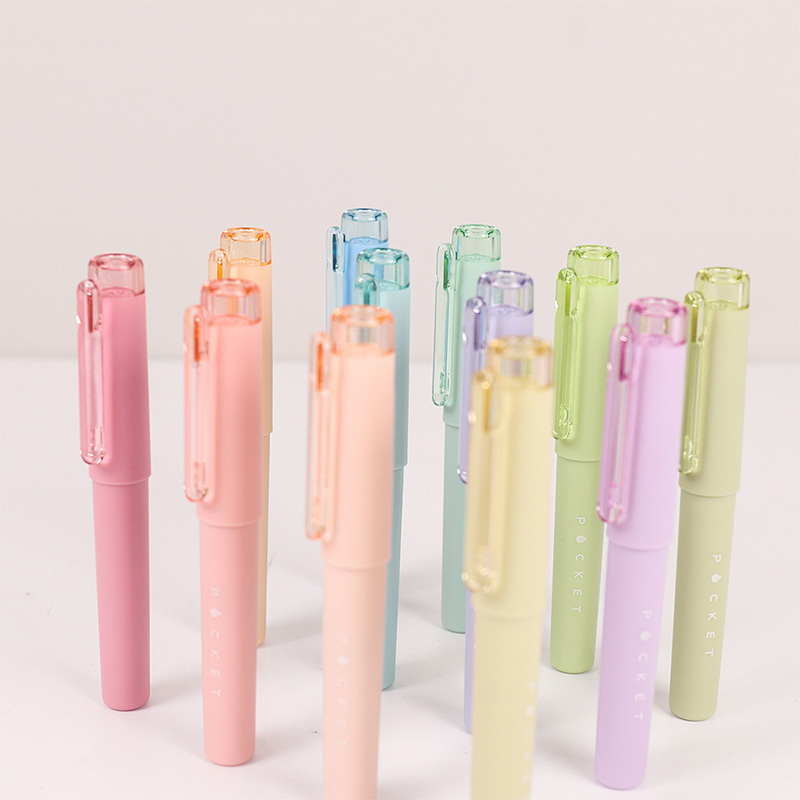The moment a fresh neon line appears on the page, the same worry flashes through every student, bullet-journal devotee, and office note-taker: will this bright streak ghost onto the next sheet? Bleed-through is the single many common complaint listed in 1-star reviews of fluorescent markers, yet the answer is not a simple yes or no. Ink chemistry, paper weight, writing pressure, and even room temperature all decide whether your tidy annotations stay put or seep into the margins below.
To begin with, understand what “bleed-through” actually means. True bleed occurs when liquid ink soaks through the entire paper fiber, emerging as a mirror image on the reverse side. Show-through, often mislabeled bleed, is simply the dark shadow you see because the paper is thin; no ink has actually crossed to the back. Distinguishing between the two helps you choose the right fix. If the reverse side feels damp or leaves color on your hand, you are dealing with bleed, and the culprit is usually ink volume.
Most fluorescent inks are water-based dye solutions, which keep them bright and quick-drying. However, dye-based formulas must stay liquid long enough to flow through a felt tip, so they carry more solvent than pigment-based archival pens. When that solvent meets low-density paper—think 60 gsm notebook sheets—the fibers act like a sponge, wicking the dye downward. The heavier the paper, the tighter the fiber weave, and the less room for capillary action. Swatch tests reveal that moving from 60 gsm to 100 gsm cuts bleed-through incidence by roughly 70 percent, regardless of brand.
Tip design matters almost as much as ink. A broad, chisel tip deposits up to 0.3 milliliters of ink per 10 centimeters of highlighting, while a fine bullet tip delivers half that amount. Users who bear down hard can triple the flow, flooding the page and guaranteeing bleed. Light, glancing strokes give the solvent time to evaporate before it reaches the sheet’s underside. Manufacturers have responded with “dry highlighters”—micro-porous plastic tips that release pigment with little liquid—but the colors are often less vibrant.

Paper coatings can be allies or enemies. Glossy, inkjet-coated stock repels water, causing highlighter ink to sit on the surface where it smears rather than bleeds. Uncoated, highly absorbent paper drinks ink quickly but increases bleed risk. For planners and textbooks, the sweet spot is lightly sized, acid-free paper in the 80–90 gsm range. Swatching on the inside back cover before marking key passages saves later heartbreak.
Temperature and humidity rarely enter the conversation, yet they play measurable roles. Cold air slows evaporation, allowing solvent more time to migrate. A five-degree drop in ambient temperature can extend drying time by 20 percent, enough to push borderline paper into bleed territory. Working in a warm, dry room or giving each highlighted line a five-second pause before closing the book dramatically reduces transfer.
Finally, consider refillable and erasable options. Some brands now sell highlighters with water reservoirs that let you dilute ink on the fly, reducing dye concentration and bleed without sacrificing brightness. Others use thermo-sensitive pigments that disappear under friction, letting you test for bleed on a sacrificial page and then erase the evidence.
So, will a highlighter bleed through paper? Only if ink, paper, pressure, and environment conspire against you. Choose medium-weight, lightly coated stock, use a light touch, and let the solvent evaporate. Under those conditions, even the brightest neon can stay exactly where you want it—on the front side of the page, loud and clear, with no ghostly echoes behind.